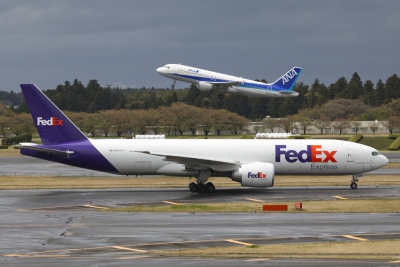The Wright brothers, Orville Wright (August 19, 1871 January 30, 1948) and Wilbur Wright (April 16, 1867 May 30, 1912), were American aviation pioneers generally credited with inventing, building, and flying the world's first successful motor-operated airplane. They made the first controlled, sustained flight of a powered, heavier-than-air aircraft with the Wright Flyer on December 17, 1903, 4 mi (6 km) south of Kitty Hawk, North Carolina, at what is now known as Kill Devil Hills. The brothers were also the first to invent aircraft controls that made fixed-wing powered flight possible.
In 19041905, the Wright brothers developed their flying machine to make longer-running and more aerodynamic flights with the Wright Flyer II, followed by the first truly practical fixed-wing aircraft, the Wright Flyer III. The brothers' breakthrough was their creation of a three-axis control system, which enabled the pilot to steer the aircraft effectively and to maintain its equilibrium. This method remains standard on fixed-wing aircraft of all kinds.:183 From the beginning of their aeronautical work, Wilbur and Orville focused on developing a reliable method of pilot control as the key to solving "the flying problem". This approach differed significantly from other experimenters of the time who put more emphasis on developing powerful engines. Using a small home-built wind tunnel, the Wrights also collected more accurate data than any before, enabling them to design more efficient wings and propellers.:156:228 Their first U.S. patent did not claim invention of a flying machine, but rather a system of aerodynamic control that manipulated a flying machine's surfaces.The brothers gained the mechanical skills essential to their success by working for years in their Dayton, Ohio-based shop with printing presses, bicycles, motors, and other machinery. Their work with bicycles, in particular, influenced their belief that an unstable vehicle such as a flying machine could be controlled and balanced with practice.:169 This was a trend, as many other aviation pioneers were also dedicated cyclists and involved in the bicycle business in various ways. From 1900 until their first powered flights in late 1903, the brothers conducted extensive glider tests that also developed their skills as pilots. Their shop mechanic Charles Taylor became an important part of the team, building their first airplane engine in close collaboration with the brothers.The Wright brothers' status as inventors of the airplane has been subject to counter-claims by various parties. Much controversy persists over the many competing claims of early aviators. Edward Roach, historian for the Dayton Aviation Heritage National Historical Park, argues that they were excellent self-taught engineers who could run a small company, but they did not have the business skills or temperament to dominate the growing aviation industry.
Air cargo is any property carried or to be carried in an aircraft. Air cargo comprises air freight, air express and airmail.

1910Nov, 7
The first air freight shipment (from Dayton, Ohio, to Columbus, Ohio) is undertaken by the Wright brothers and department store owner Max Moorehouse.
Choose Another Date
Events on 1910
- 11May
Glacier National Park (U.S.)
An act of the U.S. Congress establishes Glacier National Park in Montana. - 4Jul
Jack Johnson (boxer)
African-American boxer Jack Johnson knocks out white boxer Jim Jeffries in a heavyweight boxing match, sparking race riots across the United States. - 15Jul
Alzheimer's disease
In his book Clinical Psychiatry, Emil Kraepelin gives a name to Alzheimer's disease, naming it after his colleague Alois Alzheimer. - 18Sep
Suffrage
In Amsterdam, 25,000 demonstrate for general suffrage. - 7Nov
Wright brothers
The first air freight shipment (from Dayton, Ohio, to Columbus, Ohio) is undertaken by the Wright brothers and department store owner Max Moorehouse.

 English
English  español
español  français
français  português
português  русский
русский  العربية
العربية  简体中文
简体中文 